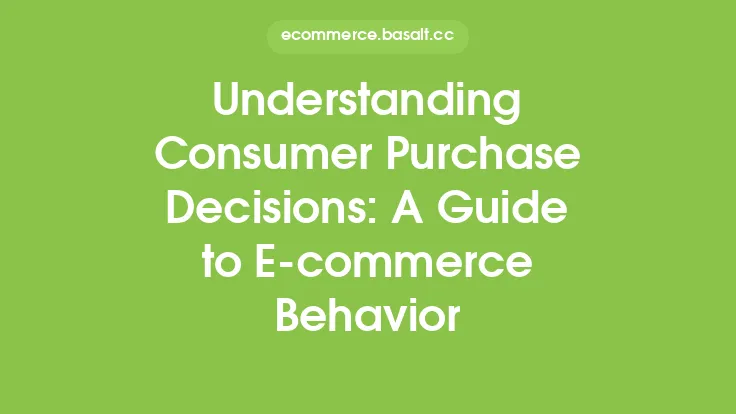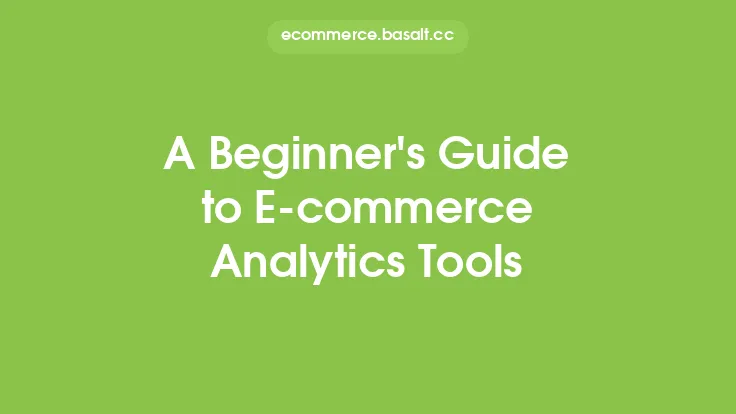In the realm of e-commerce, understanding the diverse needs and preferences of consumers is crucial for businesses to develop effective marketing strategies. Consumer segmentation is a marketing technique that involves dividing a larger market into smaller groups of consumers with similar needs, characteristics, or behaviors. By doing so, e-commerce businesses can tailor their marketing efforts to specific segments, increasing the likelihood of resonating with their target audience and driving conversions.
Introduction to Consumer Segmentation
Consumer segmentation is based on the idea that different consumers have different needs, preferences, and behaviors. By identifying and categorizing these differences, businesses can create targeted marketing campaigns that speak directly to the needs and interests of specific consumer groups. There are several types of consumer segmentation, including demographic, geographic, psychographic, and behavioral segmentation. Demographic segmentation involves dividing consumers based on characteristics such as age, income, and occupation. Geographic segmentation involves dividing consumers based on their location, such as country, region, or city. Psychographic segmentation involves dividing consumers based on their lifestyle, values, and personality traits. Behavioral segmentation involves dividing consumers based on their behaviors, such as purchase history and browsing habits.
Benefits of Consumer Segmentation in E-commerce
Consumer segmentation offers numerous benefits to e-commerce businesses. By targeting specific consumer segments, businesses can increase the effectiveness of their marketing efforts, improve customer satisfaction, and drive conversions. Consumer segmentation also allows businesses to identify new opportunities and develop strategies to capitalize on them. Additionally, consumer segmentation enables businesses to differentiate themselves from competitors and establish a unique market position. By understanding the needs and preferences of specific consumer segments, businesses can develop targeted marketing campaigns that resonate with their target audience, increasing the likelihood of driving sales and revenue.
Types of Consumer Segmentation
There are several types of consumer segmentation that e-commerce businesses can use to target their marketing efforts. Demographic segmentation is one of the most common types of consumer segmentation, involving the division of consumers based on characteristics such as age, income, and occupation. For example, an e-commerce business that sells clothing may use demographic segmentation to target young adults with a high disposable income. Geographic segmentation is another type of consumer segmentation, involving the division of consumers based on their location. For example, an e-commerce business that sells outdoor gear may use geographic segmentation to target consumers who live in areas with high levels of outdoor activity. Psychographic segmentation involves the division of consumers based on their lifestyle, values, and personality traits. For example, an e-commerce business that sells eco-friendly products may use psychographic segmentation to target consumers who value sustainability and environmental responsibility. Behavioral segmentation involves the division of consumers based on their behaviors, such as purchase history and browsing habits. For example, an e-commerce business that sells electronics may use behavioral segmentation to target consumers who have purchased similar products in the past.
Implementing Consumer Segmentation in E-commerce
Implementing consumer segmentation in e-commerce requires a thorough understanding of the target market and the ability to collect and analyze data on consumer behavior. E-commerce businesses can use a variety of tools and techniques to collect and analyze data on consumer behavior, including website analytics, customer surveys, and social media listening. Once the data has been collected and analyzed, businesses can use it to identify patterns and trends in consumer behavior and develop targeted marketing campaigns that speak directly to the needs and interests of specific consumer segments. For example, an e-commerce business that sells clothing may use website analytics to identify the demographics and browsing habits of its website visitors and develop targeted marketing campaigns that speak directly to the needs and interests of those visitors.
Common Challenges in Consumer Segmentation
Despite the benefits of consumer segmentation, there are several common challenges that e-commerce businesses may face when implementing this technique. One of the most significant challenges is the collection and analysis of data on consumer behavior. E-commerce businesses must have the resources and expertise to collect and analyze large amounts of data, which can be time-consuming and costly. Another challenge is the identification of relevant consumer segments. E-commerce businesses must have a thorough understanding of their target market and the ability to identify patterns and trends in consumer behavior. Additionally, e-commerce businesses must be able to develop targeted marketing campaigns that speak directly to the needs and interests of specific consumer segments, which can be a complex and challenging task.
Best Practices for Consumer Segmentation
To get the most out of consumer segmentation, e-commerce businesses should follow several best practices. First, businesses should have a thorough understanding of their target market and the ability to collect and analyze data on consumer behavior. Second, businesses should identify relevant consumer segments and develop targeted marketing campaigns that speak directly to the needs and interests of those segments. Third, businesses should continuously monitor and evaluate the effectiveness of their marketing efforts and make adjustments as needed. Finally, businesses should be able to differentiate themselves from competitors and establish a unique market position. By following these best practices, e-commerce businesses can use consumer segmentation to drive sales and revenue, improve customer satisfaction, and establish a competitive advantage in the market.
Future of Consumer Segmentation in E-commerce
The future of consumer segmentation in e-commerce is likely to be shaped by advances in technology and changes in consumer behavior. One of the most significant trends is the use of artificial intelligence and machine learning to analyze data on consumer behavior and develop targeted marketing campaigns. Another trend is the increasing importance of personalization, with consumers expecting a personalized experience when interacting with e-commerce businesses. Additionally, the use of social media and other digital channels is likely to continue to play a major role in consumer segmentation, with businesses using these channels to collect data on consumer behavior and develop targeted marketing campaigns. As the e-commerce landscape continues to evolve, businesses that are able to effectively use consumer segmentation to drive sales and revenue, improve customer satisfaction, and establish a competitive advantage are likely to be the most successful.





